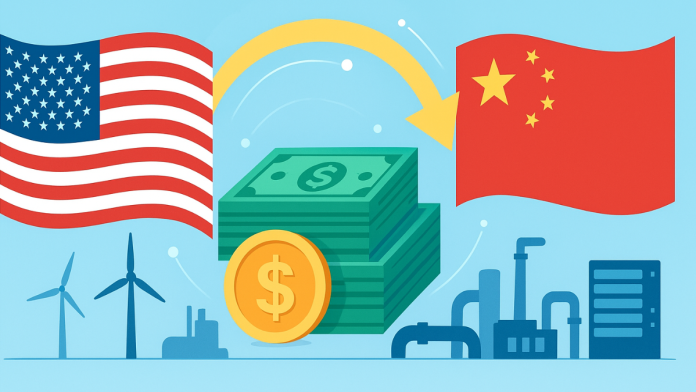A new study has found that the United States, not developing nations, is now the biggest recipient of Chinese loans. This finding has surprised many people because China has long been known for lending large amounts of money to poorer countries through major programmes focused on infrastructure and development.
According to the study, China’s total lending and grant activities between 2000 and 2023 added up to about $2.2 trillion. This money was sent to around 200 countries across the world. This means China has become the world’s largest official creditor, giving more loans and financial support than any other country.
In the early 2000s, most of China’s overseas lending went to low-income countries. But the study shows that China’s lending patterns have changed. China is now sending more money to richer countries instead of only to developing ones.
U.S. Emerges as the Top Recipient of Chinese Loans
The total amount received by the U.S. crossed $200 billion, spread across nearly 2,500 projects and activities. These loans come from various Chinese state-owned lenders and financial institutions.
Chinese entities have supported projects in many different parts of the United States. These include projects in Texas and Louisiana, where China helped fund natural gas facilities. In Northern Virginia, Chinese lenders supported the development of data centres. Chinese money has also been involved in building or improving terminals at major airports, such as those in New York and Los Angeles.
The study further highlights that Chinese lenders have offered credit facilities to several large companies in the U.S., including well-known names from the technology, automotive, aviation and entertainment sectors. This shows that Chinese financial influence is present across various industries in America.
Tariffs Alarm Bells Ring as China’s Exports Suddenly Collapse — Weakest Performance in Eight Months
Shift in Lending Pattern From Developing Nations to Wealthier Countries
One of the most important findings of the study is the major change in China’s lending pattern. In the year 2000, about 88% of China’s overseas lending went to low and lower-middle income countries. But by 2023, that number had dropped sharply to 12%. This means China is now giving far fewer loans to poorer countries than it used to.
At the same time, lending to upper-middle income and high-income countries has increased. In 2000, only 24% of China’s loans went to richer nations. By 2023, this share had risen to 76%. This shows a clear move toward funding projects in wealthier regions.
The study says that many of these loans support projects involving advanced technology, clean energy and supply chains. China has been focusing on sectors like semiconductors, artificial intelligence and renewable energy. These areas play a major role in the global economy and have become highly competitive in recent years.
Besides the United States, other high-income regions have also received large amounts of Chinese loans like the European Union received about $161 billion, while the United Kingdom received around $60 billion. These numbers show that China’s lending operations are now deeply linked with major global economies.
China’s generals vanish as Xi’s purge tears through Rocket Force — nuclear command under suspicion
China Remains the World’s Largest Official Creditor
The study confirms that China continues to hold the position of the world’s largest official creditor. Its total overseas lending, spread across different continents and sectors, makes it the top global lender. China’s financial activities cover Asia, Africa, Europe, North America, and Latin America. This extensive reach shows the scale of China’s presence in international finance.
A large portion of China’s loans now goes toward critical infrastructure and high-tech areas. These include important facilities like pipelines, data centres, transport hubs and energy systems. China has also helped finance acquisitions of high-tech companies in several countries. Because of these investments, China has built strong links with many advanced economies.
The study notes that Chinese financial institutions and state-owned entities are now active in a wide range of sectors. They support industries connected to energy, technology, manufacturing, transportation and digital services. This broad involvement shows how China’s lending has expanded from traditional development projects to more strategic and specialized sectors.




